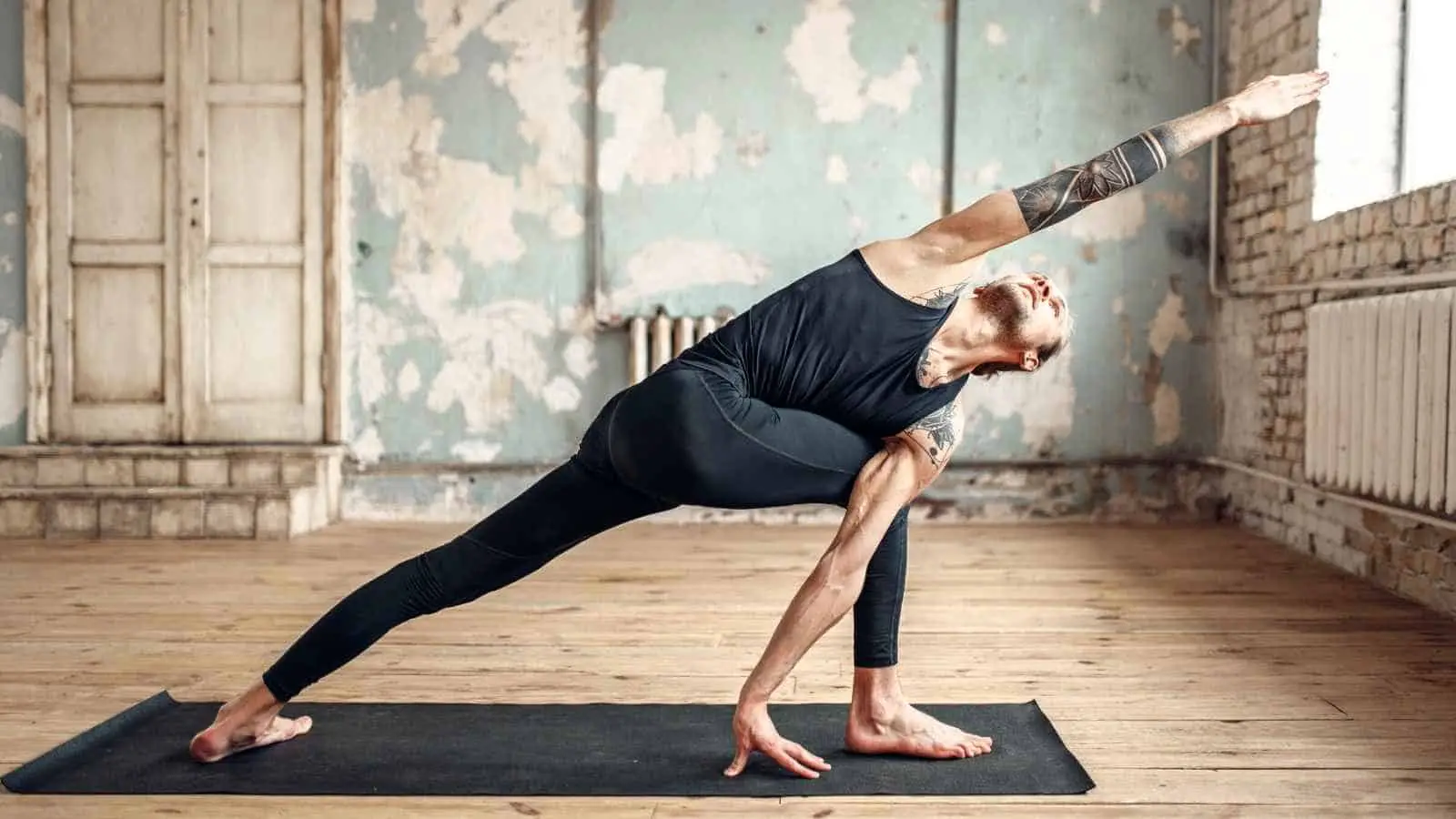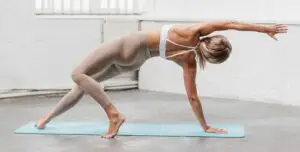A yoga instructor usually trains for 200 to 300 hours to become a certified teacher. A credible teacher training program enables practitioners to excel in one or more yoga styles. Still, being a good instructor requires a bit of flexibility and enough practical knowledge to demonstrate positions for your students.
You need to be flexible to be a yoga instructor because flexibility is both a prerequisite and a benefit of this ancient practice and its modern variants. Yoga teachers should demonstrate poses (asanas) to their students and practice alongside them, which requires balance and flexibility.
Ideally, yoga instructors should be more flexible than their students, including those practitioners with some experience. So, let’s talk about how being flexible enough to perform your yoga routine can help you become a better yoga instructor and practitioner.
Why Do You Need To Be Flexible To Be a Yoga Instructor?
Yoga has many health benefits, including enhanced flexibility, balance, and strength. However, flexibility is also a prerequisite for practitioners to progress from the basic poses to the more complex asanas.
Thus, a yoga instructor must be flexible to perform the various demanding postures or exercises. Otherwise, your students may not get much from your classes.
You need to be flexible to be a yoga teacher since training and certification programs require it. Also, yoga instructors should demonstrate the poses to their students, provide breathing cues, and ensure everyone is safe, which all demand strength and flexibility.
A Yoga Instructor Should Show, Not (only) Tell
Every beginner needs guidance to understand the various yoga postures, even the basics like the tree pose. Some practitioners may learn and adapt faster than others. However, a yoga instructor should have the flexibility to practically demonstrate every pose to a student.
Also, the ability to show every pose is not sufficient. A yoga instructor should have the balance, knowledge, and mobility to break a pose into the distinct motions of the engaged body parts leading up to the desired posture.
A few students may find a particular part of an asana demanding. Thus, a yoga teacher must slowly demonstrate and explain every motion in the whole asana to attain the pose.
Most asanas have multiple motions in precisely timed sequences. A slow demonstration of these movements demands flexibility. Otherwise, a yoga instructor may be unsteady during these balanced movements and thus be unable to hold the poses long enough to show their students.
Yoga Teaching Includes Breathing Cues
While many modern yoga practices completely segregate the exercise and meditation aspects of the ancient tradition, breathing continues to be an integral part of every pose, including the bespoke styles developed in recent decades. Thus, a yoga instructor should also provide breathing cues.
Yoga instructors must demonstrate alternate nostril breathing (nadi shodhana), ocean’s breath (ujjayi), and other techniques.
It is one thing to show these techniques while standing or sitting, and a completely different realm when you have to perform or maintain a pose and control how you breathe simultaneously. Hence, flexibility is a prerequisite for proper breathing.
Furthermore, some yoga practitioners, especially beginners and those with a medical history, may experience a few problems, such as an inability to breathe during the child’s pose.
A yoga instructor must personalize their teaching to help these students. However, personalization or showing a remedy isn’t possible if a teacher is not flexible enough to guide others through the pose and breathing technique.
It is worth noting that the child’s pose (balasana) is a simple posture. It is not among the original 84 asanas developed by the Adiyogi and is more straightforward than the classical hatha yoga poses. Thus, yoga instructors must be comfortable with the flexibility & breathing needs of demanding poses.
Every Yoga Style Demands Flexibility
Yoga instructors often specialize in a particular style. You may choose one of the traditional schools or modern yoga styles, but they all demand flexibility.
Take the example of Ashtanga or Vinyasa yoga. These styles involve multiple poses with transitions, almost like a dance. Thus, a choreographed sequence calls for a different kind of flexibility compared to isolated poses.
Like a dance teacher or choreographer, a yoga instructor must demonstrate an entire sequence, breaking down all the preparatory poses, transitions, movements, and the main asanas in the routine.
Performing such sequences, including the variants of power yoga, demands flexibility, strength, balance, and flawless breathing. Plus, yoga instructors must have the endurance to repeat these choreographed sequences, transitory movements, and poses to every class.
Flexibility Is Quintessential for Safety
Basic yoga does not test the physical limits for most people. Thus, there is nothing risky or unsafe in the elementary poses. However, flexibility becomes quintessential for safety when you perform or assist someone to do a headstand, handstand, pretzel, or another challenging pose.
Imagine performing or instructing a few students to do the one-handed tree pose (eka hasta vrksasanav). A yoga instructor must have the flexibility, strength, and reflexes to act and react in real-time to prevent an accident.
Also, flexibility is necessary for milder forms or styles, such as restorative yoga. Students at a restorative yoga class are likely to have limited flexibility due to a health condition. Thus, the yoga instructors should assist these practitioners as and whenever necessary.
The Fellowship of Yoga Is Based on Trust
The fellowship of a yoga teacher and students is built on faith, like that of a guru and disciples. Practicing the same yoga poses alongside and together as a team strengthens this fellowship.
Also, trust grows as the teacher and students improve their prowess in due course. Like the students, yoga instructors continue to discover more of what they can do as they practice, even after years of teaching. However, none of that can happen without flexibility.
Injuries and modifications in yoga
Injuries can happen to anyone, including yoga teachers, during innocent moments like skiing, running, maybe playing, or simply with unlucky steps. This can have a significant impact on the flexibility of the body.
While being flexible is an advantage when you are a yoga teacher, some yoga teachers might not be able to perform yoga asanas due to personal injuries. In that case, you can expect a yoga instructor to clearly explain how to do the pose or ask a (flexible) volunteer from the class to assist with performing the pose.
A yoga teacher will also show how to modify the pose using yoga props like yoga blocks and straps to get the most out of your yoga practice.
Final Thoughts
You need to be more than just flexible to be a yoga instructor for all practical purposes. Ideally, it would be best to be the most flexible practitioner in a class or studio if you want to be a yoga teacher.
Besides, flexibility is a natural and progressive benefit, so practicing yoga is all you have to do to gain the strength and stretch necessary to become a successful instructor.








